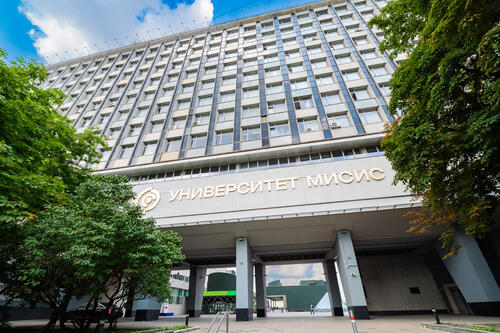In the period from March

Since the start of the russian academic excellence project
Luis Halamek (Stanford University, USA) noted that the ambitious targets set by the university are already largely fulfilled. According to him,"For integration into the global educational community NUST MISIS must continue the work that is already being done, i.e. to involve faculty from around the world to increase the enrollment of international students. The more colleagues around the world will be integrated into the activities of the university, and MISIS will be more recognizable at the international level.“
Lindsay Greer, a member of the International Scientific Advisory Council from Cambridge University, stressed the importance of new approaches to the management of human resources, quality, and timely updating of teaching staff.
Members of the ISAC have paid special attention to the situation of the University in world rankings and cited scientists in international journals. “Big Three” ratings (QS, THE, and ARWU (Shanghai ranking)) provide a comprehensive system of data collection. The ranking of the University directly affects its professors’ citation index. Since Russian universities needed to develop service support publication activity for scientists, MISIS recently established a project office, which will organize the work to provide training for placement of publications in leading scientific journals, help with high-quality translation, organize a common knowledge base for publications, and expand access databases and electronic resources of scholarly publishing.
According to members of the International Scientific Advisory Council of NUST MISIS, it is also important for the successful implementation of the program to create its own business incubators, support startups, and develop endowment funds.
Scientists discussed the results of the most promising projects selected in March last year for the establishment of research laboratories and groups, including three new laboratories, which began their work in 2014.
The first of these, “Biomedical Nanomaterials,” which is headed by Alexander Mazhuga, Doctor of Chemical Sciences, develops unique theranostic (the word is derived from “therapy” and “diagnostics”) materials. The second innovative research project in the field of medicine is a laboratory for physical methods and instruments of diagnosis and treatment of cancer, headed by Yefim Khazanov, Doctor of Physical and Mathematical Sciences.
In May 2014 NUST MISIS started a working laboratory, headed of Professor Peter Fedotov (Vernadsky Institute of Geochemistry and Analytical Chemistry, RAS), for the separation and concentration of the chemical in the diagnosis of functional materials and environmental objects. Using unique methods for the analytical separation of particles, the researchers were able to study the until now unknown properties in detail and design on their base materials with improved characteristics.
In addition to sharing their expertise with the university during their visit, the scientists gave presentations on the latest trends in the world of science. Twelve members of the International Scientific Advisory Council spoke during a series of open lectures on Materials Science, Mining, Medicine, and Nanotechnology to students and guests of the university.


